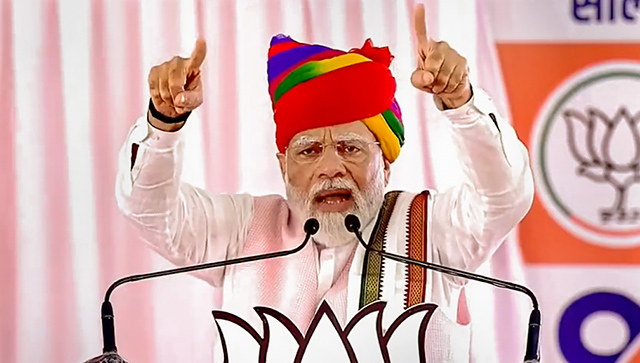The Economic Survey, which was released a short while ago, has recommended that the government needs to look at a union of Jan Dhan Yojana, Aadhaar and Mobile numbers or the JAM trinity, in order to ensure the benefits of subsidies reach those who deserve it.
According to the survey, even though there are subsidies for a variety of products like rice, wheat, pulses, sugar kerosene, LPG, naptha, water, electricity, diesel, fertilizer, iron ore, railways but the poor are often unable to get the benefits.
The survey notes that for instance price subsidies in electricity can only benefit the relatively wealthy, while in the case of LPG, only the poorest 50 percent of homes only consume 25 percent of LPG, while the majority of (51 percent) of subsidised kerosene is consumed by the non-poor.
It adds that price subsidies allocated to water utilities- upto 85 percent- are spent on subsidising private taps, even though 60 percent of poor households are dependent on public taps for their daily water needs.
The below chart gives a sense of how leakages in the Public Distribution System continue to run into thousands of crores for items like Wheat, Kerosene, and Rice.
A possible solution? The survey notes that combining the Jan Dhan Yojana, Aadhaar and Mobile numbers can help reduce this leakage. It points out that by December 2015 the total number of Aadhaar enrolments in the country is expected to exceed 1 billion (it stood at 720 million in December 2013) and that linking an Aadhaar Number to an active bank account is key to implementing direct income transfers to the poor.
The Jan Dhan Yojana scheme aims to increase the number of bank accounts and is specifically targeted at the poor. According to the survey, two alternative financial delivery mechanisms that could reduce leakages in the PDS system are mobile money and post-offices.
India has over 900 million cell phone users and close to 600 million unique users (people with just one SIM), and in such a scenario mobile money can help deliver the direct transfer benefits to the poor. Also linking Aadhaar to a mobile number will reduce the amount of work required.
The other solution points out that India’s Postal Network (which is the largest in the world with 1,55,015 Post Offices of which 89.76 percent are in rural areas). These can also be linked to the Aadhaar-related benefit schemes. The survey notes that “the Post Office can seamlessly fit into the Aadhaar linked benefits-transfer architecture by applying for an IFSC code which will allow post offices to start seeding Aadhaar linked accounts.”
According to the survey, the way to reduce leakages in the PDS system is by increasing the direct transfer scheme, which can be utilised better if Aadhaar, Mobile and Bank accounts are linked more efficiently.
)
)
)
)
)